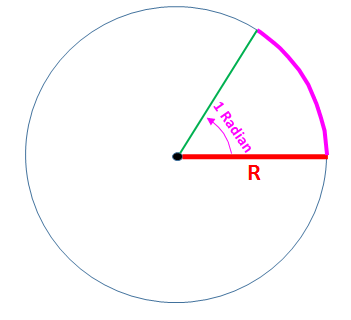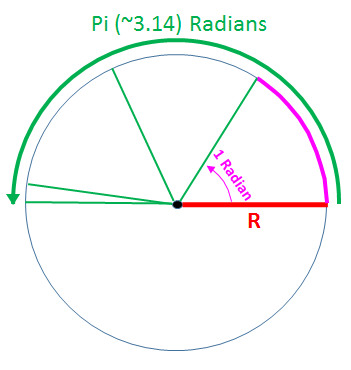`pi`
Tags | |
UUID | e6d1e5b9-da27-11e2-8e97-bc764e04d25f |
Pi is the most famous transcendental number. Pi is represented by the Greek letter 'pi' and has presently been computed to twelve trillion digits in December 2013, taking over a year to compute. See this token's notes page for more history and explanation of the number `pi`.
The Math / Science
A Transcendental Number
Pi is a transcendental number, one of the most famous of transcendental numbers. Transcendental numbers are any numbers that cannot be expressed as a root of a polynomial equation. It cannot be expressed as a root of a polynomial because it contains an infinite number of digits - the sequence of digits in pi never repeat.
This of course has made it a target for mathematicians and computer scientists, who have developed special algorithms to try to compute `pi` to a greater number of digits. They have often run the programs for months, even years to create a more precise version of Pi. Pi has presently been computed to ten trillion digits, taking over a year to compute. Executing a computer algorithm that computes `pi` algorithmically can literally run endlessly.
If you use the constant Pi in vCalc, you can display the following number:
3.14159265358979323846264338327950288
There are many places on the Internet where you can find Pi to a greater number of decimal places.
Pi And The Circle
Pi is most famous for its association with the circle. To understand PI's relationship with the circle we first have to understand the unit of measure called a radian. A radian is a unique metric derived from taking the radius of a circle and wrapping it around the circumference of the same circle. As in the picture below, the red radius when bent around the circumference of the circle, as the purple segment of the circle in the left picture below, defines the angle of 1 radian.


We find that the radius when wrapped around the circumference of the circle partitions half the circle into exactly Pi radians. This is approximately 3.1415 radians as shown in the picture on the right. A total angle of 2 `pi` radians encompasses one full turn around the whole circle. Since a circle has 360 degrees of angular displacement, 360 degrees equals 2 `pi` radians.
Another way that Pi is related to the circle is that Pi = circumference / diameter. Pi can be approximated by the fractions: 22/7, 333/106, 355/113
Some of Pi's History
The ancient Egyptians knew of Pi because the Great Pyramid at Giza was built with a perimeter of about 1760 cubits and a height of about 280 cubits. The ratio of perimeter to height 1760/280 ≈ 6.2857 is approximately 2π.
An earlier approximation of π was found in Egypt and Babylon on a clay tablet dated 1900–1600 BC. This approximation estimated π as 25/8 = 3.1250. Another approximation of π found in Egypt was copied from a document dated to 1850 BC. This document described the estimation of the area of a circle and approximates π as (16/9)2 ≈ 3.1605.Both of these approximation are within 1 percent of the true value of Pi.

Calculators
Equations and Data Items
Collections
- Comments
- Attachments
- Stats
No comments |
